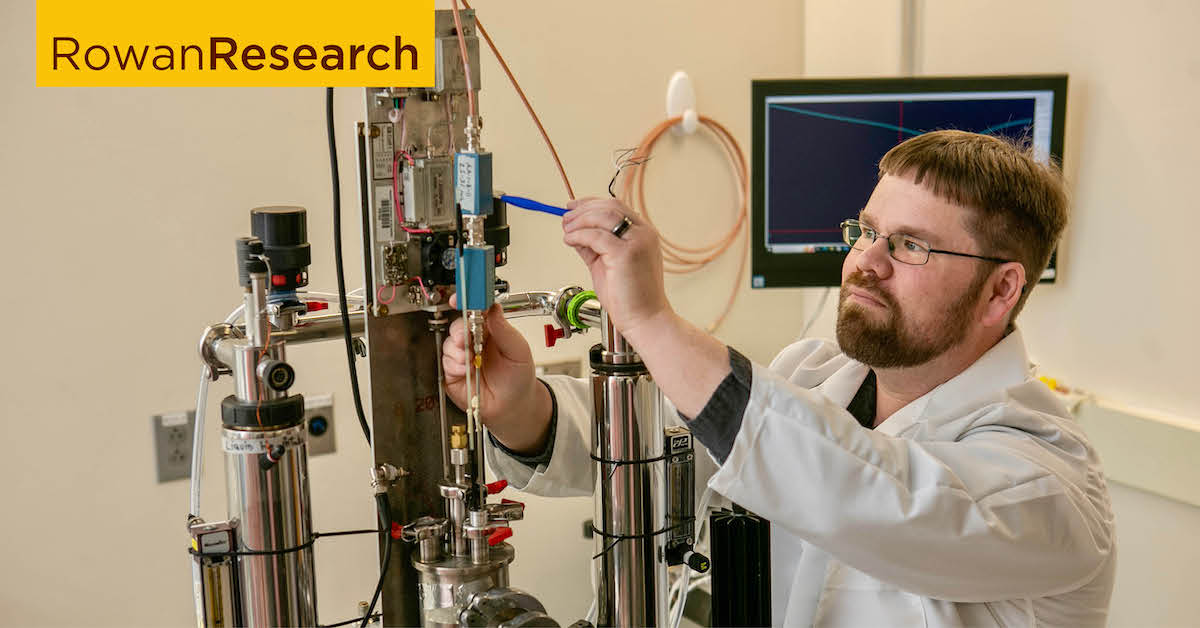Improving the traditional MRI
Improving the traditional MRI

Hyperpolarization could be the key to better, faster, cheaper MRIs with more extensive biomedical applications.
The magnetic resonance (MR) signals used for medical imaging have limitations, explained Nicholas Whiting, Ph.D., an assistant professor with dual appointments in the Department of Physics & Astronomy and the Department of Biological & Biomedical Sciences at Rowan University’s College of Science & Mathematics.
Nicholas Whiting, Ph.D.
Interdisciplinary scientist
Areas of expertise:Hyperpolarized magnetic resonance, nanomaterials
More information"In biomedical applications of magnetic resonance, the signal is so weak that you need to take hundreds of images and average them together,” Whiting said. “That’s why MRIs take so long.”
Strengthening these signals through a process called hyperpolarization could speed up this process.
“Using clever physics and chemistry, we can boost the signal by orders of magnitude, so you can sense things in a second that would otherwise take half an hour,” Whiting said.
In his lab, Whiting studies three types of polarization to enhance the MR signals of particles: parahydrogen-induced polarization, spin-exchange optical pumping and dynamic nuclear polarization. Whiting’s work using parahydrogen-induced polarization is funded by a grant from the American Chemical Society Petroleum Research Fund. A National Science Foundation CAREER Award is funding his work in applying dynamic nuclear polarization to study carbon quantum dots in a novel way.
By strengthening MR signals through hyperpolarization, more cost-effective biomedical imaging may be possible.
“If you could increase nuclear magnetic resonance enough, you could use portable, cheap equipment instead of the big, expensive imaging equipment currently in use,” Whiting said.
Developing a deeper understanding of hyperpolarization’s effects on MR signals may also expand potential biomedical applications of magnetic resonance imaging technology.
“Having stronger signals would allow us to use MR to examine things that happen faster than a traditional MRI can process,” Whiting said. “Hyperpolarization opens the door to the types of systems that can be seen with magnetic resonance.”
Rowan University researchers are passionate about what they do. Find more at Meet Our Researchers.